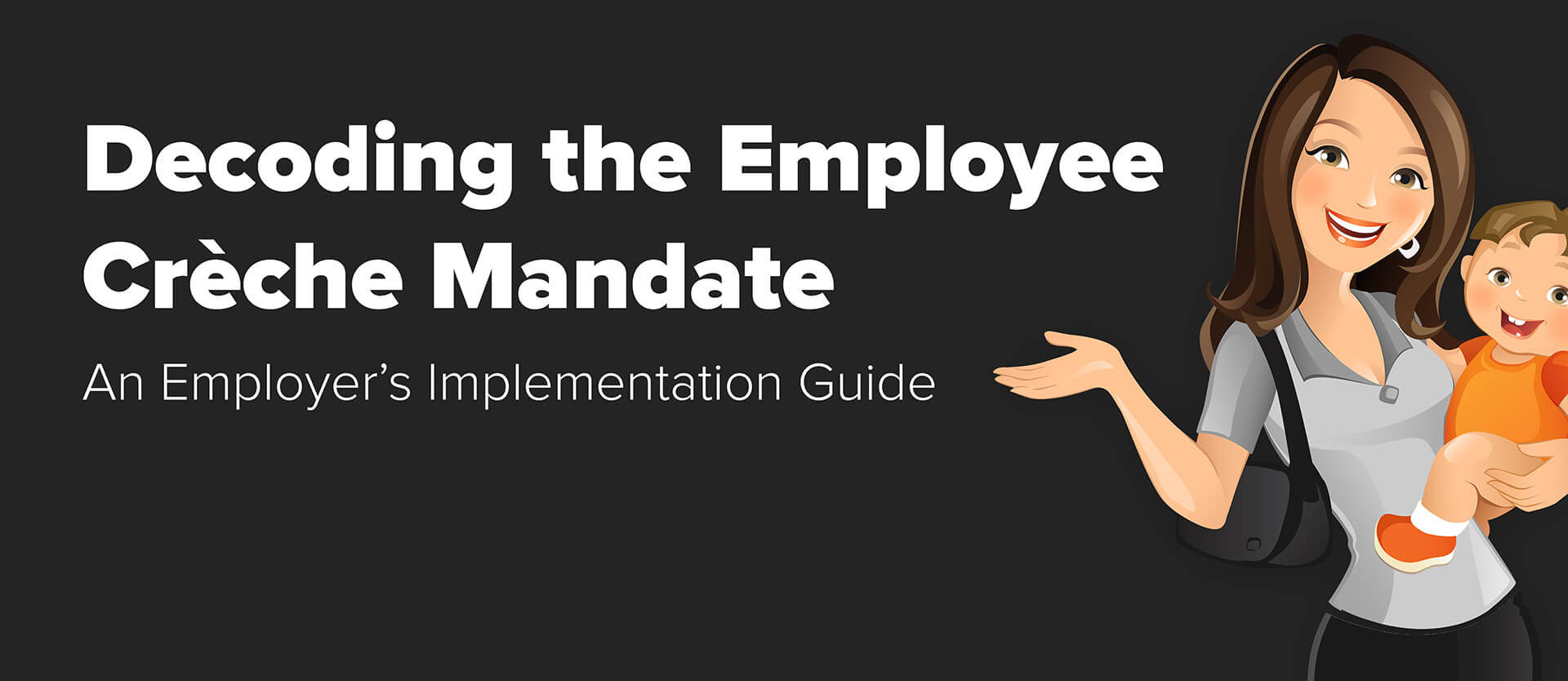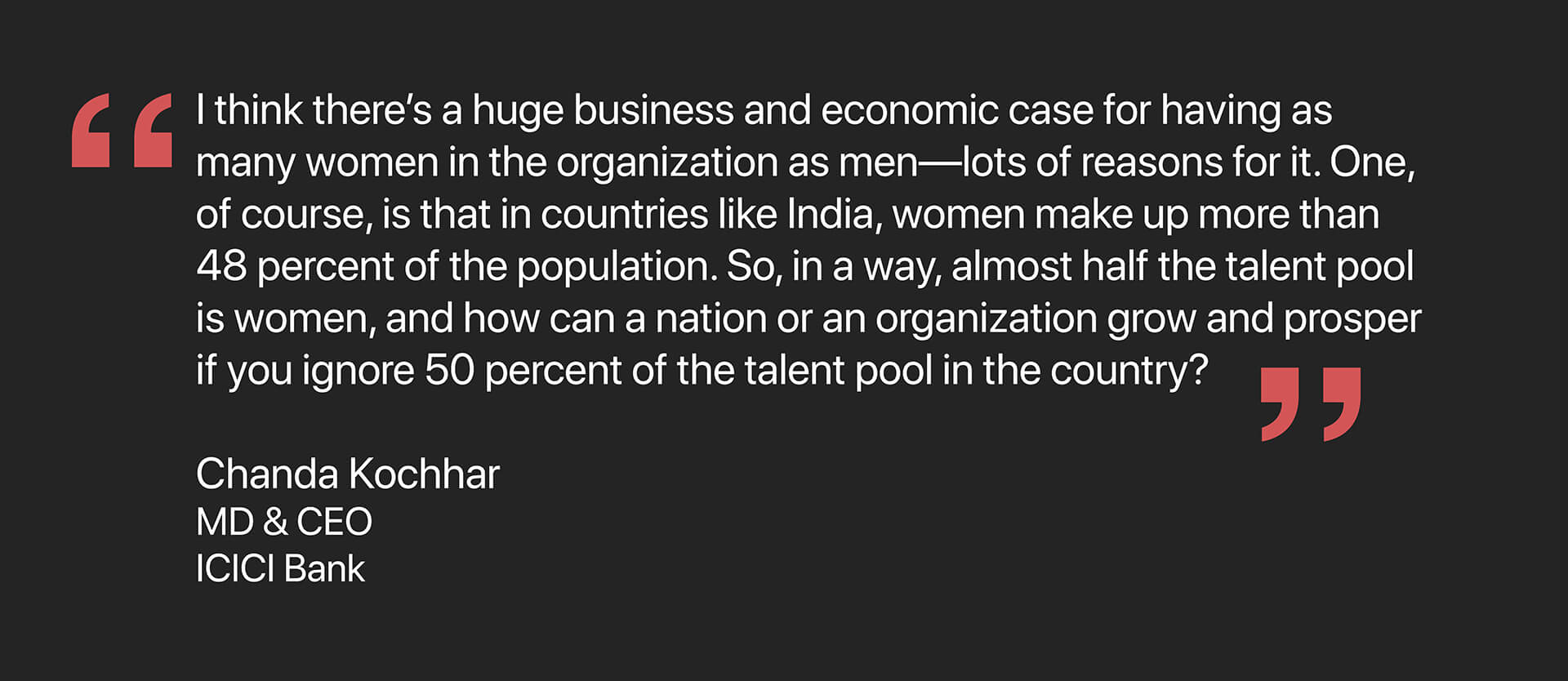|
|
by Pratik Dhar – Associate Consultant

It’s an undeniable fact that most developing economies are evolving into a state where women are becoming a significant segment of the consumer base for every product or service. Consequently, it makes perfect sense to have sufficient female representation in the decision-making process for building those products and/or offering those services. Seen through this lens, gender parity in the workforce is not just a ‘number’ to create positive optics but a deeper competitive advantage for any business.

The recent amendment to India’s Maternity Bill has provided a much-needed impetus to efforts to improve workplace gender parity. The Act has mandated, among other benefits, the extension of maternity leave duration to 26 weeks from 12 weeks, and the provision of crèche facility for women employees at the workplace.
A decided lack of clarity in the provision of employee crèche facilities in the amendment has elicited multiple questions from companies, ranging from, “Will the mandate help our company reduce attrition?” to “Will my company be responsible for the well-being of children in the crèche?” This post intends to clarify these ambiguities and help companies to initiate the implementation of the mandate successfully.
Crèches have been instrumental in enabling well-balanced diversity in the workforce. Zinnov has interviewed several global technology companies and discovered that suitable implementation of this provision has had a significant correlation in boosting productivity and reducing attrition of women employees within organizations.
If assured of top-notch care for their children, women transition back to their roles more smoothly and attain greater productivity, and experience a heightened sense of loyalty at work, post childbirth. Access to crèches, especially on-site, ensures that women can be present on-site with their teams, thus dramatically reducing the duration and frequency of sabbaticals, a deterrent to their career.
Based on our findings, when presented with a choice, companies have picked partnership with an established crèche company over building one on-site. For instance, Microsoft has had a functional crèche in partnership with WeCare for nearly three years. Indian companies like HCL, Airtel, also have crèches operating in partnership with popular vendors. Some of these companies have had the crèche built on-site, but the management of the facility is being handled by external crèche providers.
Whatever benefits one can expect from running a crèche are superseded by the risk of inherent liabilities related to the children’s safety and well-being. Plus, a possible lack of professionalism, even if it’s merely perceived so, might discourage parents from availing the benefit with a direct reputational impact on the organization offering the same.
It lies with the organization. If an organization has chosen to build and operate the crèche in-house, the liability for any mishaps that occur in the crèche will lie with the company. This is another reason why Zinnov advocates engaging with a crèche provider instead.
Do partnerships with crèche service providers absolve an organization of all liabilities? If an organization chooses to partner with a crèche provider, the exposure to risk is lower than when operating the same in-house. But this mitigation against risk holds good only if appropriate due diligence has been performed on the crèche provider – covering safety standards, hygiene standards, etc. This assessment should also be well-documented and communicated to all the employees.
If the employees are to avail this facility to its full potential, it is beneficial to go the extra mile and ensure that they are getting the best service from the vendor chosen. It would help in building loyalty for the company in the long run.
As of now, there is no government-mandated checklist for vendor assessment. However, as a part of our people consulting practices over the years, we at Zinnov, have found that there is a de-facto checklist to initiate engagement with crèches.

The checklist covers the bare essentials being provided by crèches. Some of the new age amenities that can be of interest to employees include –
Although these facilities are not a necessity, they are bound to reflect genuine effort on the organization’s part to provide the best facilities for their employees, and thus help build credibility for the crèche.
The commercials of running a crèche facility in-house can be potentially overwhelming for any company. A few organizations had been running partially subsidized crèches in the past, that operated on either of these premises –
In both scenarios, employees had to bear the bulk of the cost. However, Zinnov believes, that such engagements will have to change, as a result of the new law.
The existing labor laws concerning these have not answered the question of cost contribution comprehensively. However, it has now explicitly been positioned as an employee benefit, which implies that the liability of cost is on the employer.
Unfortunately, due to the dismal gender ratio in Global In-house Centers (~ 20-22%), and a negative social stigma associated with sending children to crèches, it is unlikely that enough women will avail of the crèche to ensure full utilization.
There are a few other alternatives that an organization could consider:
The first option might seem relatively affordable in the short run, but has an inherent set of problems. By being operators of the crèche, the organization will expose itself to unwarranted liability for the well-being of the children. The risks will overwhelm any cost advantage that the company could get. Considering the possible cost of litigation associated with these risks, this does not appear to be a viable choice.
The second option has proven to be a successful alternative =, as pooling ensures that several organizations are providing a suitable, economically-viable proposition to the crèche provider to operate in a nearby location. The organization can potentially get cost benefits from subscribing to more seats at the crèche, while circumventing any liabilities that could potentially arise from running a crèche. Engaging with a common crèche provider ensures that there is no confusion regarding sharing of liabilities inherent in the operation of the crèche.
What if the organization has no parents willing to utilize the crèche in the immediate future? What needs to be done to remain compliant with the law? We suggest following these simple steps:
The best foot forward in such scenarios could be to tie up with crèche providers on a pay-as-you-use basis. In such an arrangement, the company does not incur any cost when there are no women employees availing the crèche facilities.
The mandate is still unclear about many procedural aspects of providing the crèche facility. Some of these include –
Although there are ambiguities around these questions, companies should not deter themselves from implementing the provision. These ambiguities will be covered in the guidelines that the government would eventually release, but logic can answer most operational questions regarding the crèche.
Multiple uncertainties exist in the current law, which have kept companies on tenterhooks about implementing the workplace crèche mandate. Zinnov’s conversations with industry stakeholders have reinforced the opinion that the long-term benefits of a comprehensive implementation of the mandate outweigh the short-term gains of taking half measures, just to be compliant with the law.
The first, most obvious argument in favor of our position is simple: there may be loopholes in the law’s current format, and there are definitely a few important details that the law is silent about. It might seem viable for some companies to implement stopgap solutions for now instead of rolling out the full crèche mandate. But once the loopholes have been plugged, these companies might be caught racing to meet compliance requirements in the face of an unpredictable deadline. Companies might even incur additional compliance costs, not to mention losing out on early mover advantage for optimally-priced crèche services.
The second argument involves the more critical question related to employee engagement. The Act has intended for the provision of the crèche facility to be a benefit provided to the employee. Many companies that covet the best employer tag and are capable of attracting the most skilled employees, have realized this and have or will be rolling out the benefit in its full form. In such a scenario, an employer runs the risk of being disengaged with their employees if they choose to go for stopgap solutions.
Multiple studies have emphatically established that employees’ work-life balance is truly beneficial for the employer. In such a scenario, some employers are also contemplating the extension of paternity benefits to their employees after the introduction of the Maternity Benefit (Amendment) Act. Some proponents believe that this will provide a more equitable parental benefit system for employees.
While the intent for greater gender parity is commendable, our actions are still in a nascent stage. Arundhati Bhattacharya, the first woman to head SBI in 208 years, believes very few Indian women stay long enough to progress to higher levels in the organization, and that we need to do more to retain women in the workforce, especially after childbirth.
Employee benefits are a powerful tool for any employer to engage with their employees. This presents an enormous opportunity for employers to address gender disparity at the workplace through benefits geared towards creating equitable working conditions. Such initiatives will subsequently enable employees to reap the socio-economic benefits of a diverse workforce.
Sound knowledge of industry best practices, the pulse of knowing what employees need, and a structured assessment of employee benefit programs are some of the pre-requisites to ensure an organization’s efforts to bridge gender disparity that has plagued the workforce at large for several years.
